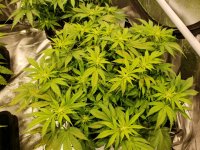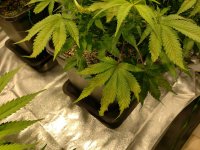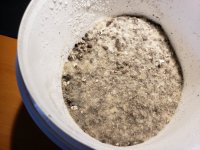Northern Boxer
420 Member
My plants are in their second week of flower and all appeared well until 3 days ago when I observed brownish spots and yellowing of leaves. From my research it appeared to be a calcium deficiency so last night I cal mag 'd all 4 plants. I have also inspected with a 60x scope and can not see any traces of insect infestation. Based on my pics am I on the right track and is there's any hope of recovery at this stage? Thanks






